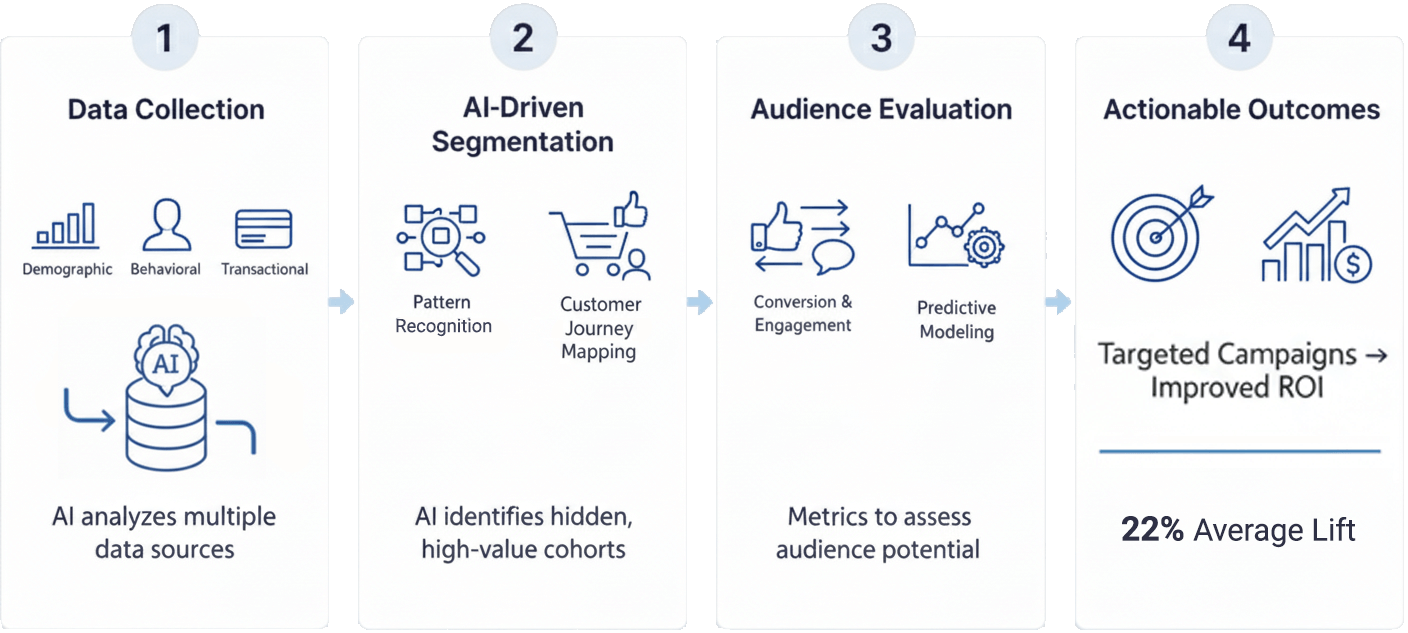AI Uncovering Responsive Audiences (AURA) is a breakthrough AI-first audience discovery and optimization program. Using advanced pattern recognition across behavioral, demographic, and transactional data, AURA continuously identifies and upweights high-response micro-segments that traditional targeting methods miss. Early pilots demonstrate an average 22% lift with no creative changes and minimal workflow impact—just split your audience lines and let AI optimize weekly.
Research Objectives
- Quantify incremental lift from AI-driven audience reweighting versus business-as-usual targeting.
- Surface novel high-response cohorts invisible to traditional segmentation.
- Improve cost-per-acquisition and conversion rates.
- Establish a simple, repeatable playbook for continuous audience optimization.
Research Questions
- Which signals (demographic, behavioral, contextual, geography) most influence uplift?
- How large and persistent is the incremental conversion lift versus BAU across categories and KPIs?
- How do the weekly reallocations affect CPA and CLV? Do effects compound over time?
- How well does the method port from Claritas audiences to other audience sources or ZIP-based cohorts?
How it works

Read & Analyze
- AI reads your website and conversion data
- Analyzes historical campaign performance
- Identifies patterns in high-converting audience segments
Plan Segments
- AI creates micro-segmentation within your existing audience
- Identifies which cohorts are most likely to respond
- Generates weekly optimization recommendations
Launch & Learn
- Split each placement into A (AI) and B (BAU) lines
- Allocate ~80% budget to AI-optimized segments, ~20% to baseline
- Update weekly based on AI guidance
- Track performance improvement in real-time
The AI Advantage
Dynamic audiences that adapt weekly to conversion feedback, continuously shifting impressions toward high-response micro-segments and away from those unlikely to convert.
Methodology & Approach
| Test Design | You keep your existing audience targeting. We simply split each media line into two:
|
| Channel Scope | The test runs on open-web display, audio, and video. Amazon is also supported. |
| Attribution | You place a standard pixel or postback on the conversion event (e.g., site visit, purchase, sign-up). |
| Requirements | The campaign needs a minimum of 10 million impressions over ~4-6 weeks with relatively even pacing. No creative changes are required. Uses standard ad-server tagging. |
| Outputs | Arm-by-arm performance, uplift calculations, and cohort insights with recommendations. |